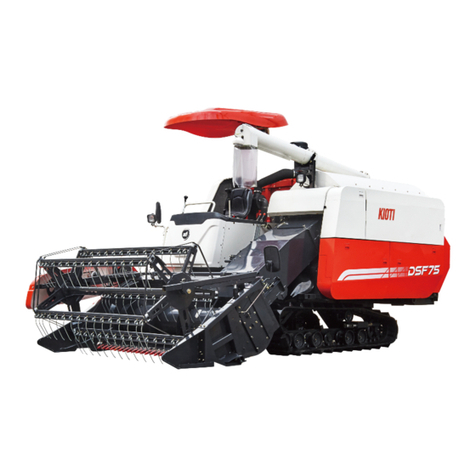
1. FOR SAFETY .......................................... 0-3
1.1 Alert symbols............................................ 0-3
2. SAFETY TIPS.......................................... 0-4
2.1 Safety gear ............................................... 0-4
2.2 Work place .............................................. 0-4
2.2.1 Ventilating system........................... 0-4
2.2.2 Safe working place ......................... 0-4
2.2.3 Illumination ..................................... 0-4
2.2.4 Safety equipment............................ 0-4
2.2.5 Clean working area......................... 0-4
2.3 Safety instructions when preparing combine
harvester .................................................. 0-5
2.4 Avoid fires................................................. 0-5
2.5 Cautions when handling the battery......... 0-6
2.6 Cautions for high pressure hoses .................0-6
2.7 Use of appropriate tools and equipment.... 0-7
2.8 Handling of hazardous materials.............. 0-7
2.9 Handling of rotating blade, shaft and driving
belt ........................................................... 0-7
2.10 Prevention of scald................................... 0-8
2.11 Disposal of environmental waste ............. 0-8
3. FOR YOUR SAFETY............................... 0-9
3.1 Check before operation............................ 0-9
3.1.1 Preparation and inspection............. 0-9
3.1.2 Starting the engine .........................0-9
3.2 Driving ................................................... 0-10
3.2.1 Driving on a road .......................... 0-10
3.2.2 Driving on a narrow rural path, bumpy
road or slope................................. 0-10
3.2.3 Stopping and parking.................... 0-10
3.2.4 Loading and unloading the combine
harvester to the transporting vehicle
...................................................... 0-10
3.3 Harvesting .............................................. 0-11
3.3.1 Driving onto and out of the field.... 0-11
3.3.2 Operation in field .......................... 0-11
3.3.3 Storage after daily work is completed
...................................................... 0-11
3.4 After completing Intended operation and
Storage................................................... 0-11
3.4.1 After daily work is completed...............0-11
3.4.2 Long-term storage ........................ 0-11
4. GENERAL PRECAUTION BEFORE OP-
ERATION ............................................. 0-12
5.
WHEN SERVICING, REPAIRING AND CLEAN-
ING BEFORE OPERATION.........................0-13
6. WHEN STARTING THE ENGINE ........ 0-16
7. WHEN DRIVING .................................. 0-17
8. DRIVING ON A NARROW PATH, BUMPY
ROAD OR SLOPE............................... 0-19
9. LOADING AND UNLOADING THE COM-
BINE HARVESTER TO THE TRANS-
PORTING VEHICLE ............................ 0-20
10. AFTER DAILY WORK IS COMPLETED
............................................................. 0-22
11. FOR LONG-TERM STORAGE............ 0-24
12. SAFETY DECALS ............................... 0-25
12.1 Location of decals .............................. 0-25
SAFETY FIRST
DSC48
TABLE OF CONTENTS





























